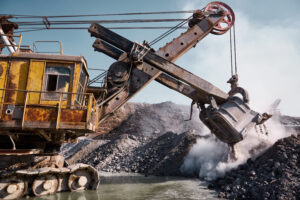Emyria’s (ASX:EMD) commercial breakthrough in psychedelic medicine
![]() Stuart Roberts, September 10, 2025
Stuart Roberts, September 10, 2025
When Perth-based Emyria (ASX:EMD) announced on 18 June that Medibank would be funding eligible customer participation in Emyria’s Post-Traumatic Stress Disorder care programme, with no out-of-pocket costs, investors who know the Life Sciences sector needed to sit up and take notice. Here was Australia’s largest health insurer, with over 4.2 million customers, saying that it would pay for the MDMA-assisted therapy developed by Emyria. This was, in effect, a ‘company maker’ for Emyria.
What are the Best ASX Life Sciences stocks to invest in right now?
Check our buy/sell tips
MDMA is not the party drug you thought it was
Emyria is now providing, commercially, what psychiatrists and psychiatric researchers have been talking about for decades: MDMA-based therapy for the treatment of PTSD. MDMA, or 3,4-Methylenedioxymethamphetamine as it is properly called, often goes by the name of ‘ecstasy’. You heard that right. The party drug taken at ‘raves’ because it promotes euphoria and feelings of closeness (among other pleasant sensations). It may have been illegal in most jurisdictions since the 1980s, but there’s a legitimate medical use.
While talking to a psychotherapist, a person under MDMA’s influence can be enabled to revisit traumatic memories and work through their emotions without being re-traumatised or overwhelmed. This unique effect enables deeper emotional processing and can unlock therapeutic progress that may not otherwise be possible. For example, you could take an ex-serviceman mentally crippled by what he saw and experienced in Iraq or Afghanistan, and more or less allow him to more fully engage with therapy. This can help him process what occurred and begin to restore a sense of normal function and well-being.
There’s great clinical data
How can MDMA do that? Basically, it promotes the release of serotonin and blocks its reuptake, so that the amygdala, the part of the brain that processes fear and anxiety, is calmed down. The result is less ‘fear memory reconsolidation’ and a reduction in fear, at the same time as the person taking the drug feels a deeper sense of empathy and openness towards themselves and others. That person, with the help of the psychotherapist, can more easily work through and resolve what was causing them trauma.
We said above that this had been known about for a long time. Before MDMA’s ban in America in 1985, it had been used for this purpose, and after decades of lobbying by concerned professionals, the FDA finally came around in 2004 to the view that it was worth studying clinically. That led to a landmark randomised controlled study run by Mithoefer et. al., where, after MDMA therapy, only 2 out of 12 patients with chronic, treatment-refractory PTSD still had it, as against 6 out of 8 in the placebo group. You can read all about that breakthrough in the April 2011 edition of the Journal of Psychopharmacology (Just Google J Psychopharmacol. 2011 Apr;25(4):439-52).
How Emyria (ASX:EMD) became a proponent of MDMA therapy
Over the next 12 years the clinical evidence of MDMA’s effectiveness in psychotherapy continued to build, to the point where in February 2023, Australia’s Therapeutic Goods Administration decided that specially authorised psychiatrists would be able to prescribe MDMA and its fellow psychedelic drug psilocybin in Australia from July of that year. That was a world first. And it was also an opportunity for Emyria. The company had started life as an operator of medicinal cannabis clinics and done some medicinal cannabis drug development but had started to look at psychedelics as well. Even before the 2023 TGA announcement Emyria, spotting a major commercial opportunity, started tooling up to be a provider of MDMA-based psychotherapy.
The progress since early 2023 has been swift. In July 2023, Emyria acquired the Pax Centre, a clinical service specialising in comprehensive psychological trauma care. It subsequently established the ‘Empax Centre’ by merging the names ‘Emyria and ‘Pax’. By January 2024, the company had psychiatrists with ‘Authorised Prescriber’ status, allowing them to administer the therapy, and it was treating patients shortly thereafter. A second Empax Centre in Perth opened in April 2025.
By May 2025, it had six-month follow-up data from the first eight patients in its programme. And they were very encouraging. PTSD symptom severity is measured by a rating scale called the PCL-5. For Emyria’s first 8 patients at six months, 5 of 8 no longer met the criteria for PTSD diagnosis because PCL-5 was less than 32. Their Quality of Life, as measured by something called ‘ReQoL-10’, was up a massive 121.5%. It was this data which likely convinced Medibank, a month later, to announce that it would start paying for the therapy.
Emyria’s therapy is cost-effective
PTSD costs healthcare systems a fortune to manage. For example, one 2022 study in the Journal of Clinical Psychiatry estimated that for the US in 2018, the total ‘excess economic burden’ of PTSD was US$232bn, being $19,630 per individual. $190bn of that was civilian and the rest military, and of that US$190bn, US$66bn was direct health care, with unemployment another US$43bn (Google J Clin Psychiatry. 2022 Apr 25;83(3):21m14116).
Now, remember, until the TGA’s surprise decision in 2023, there had been no new drug approvals for treating PTSD for over 20 years. With funders like Medibank and the life insurers having to pay out something like A4$bn in Australia for PTSD and other mental health conditions, and Veterans Affairs another $300m, it becomes highly cost effective to send patients to effective new solutions like that offered at an Empax Centre.
That in turn made for a huge market opportunity for Emyria. The company has estimated a ‘serviceable addressable market’ of 585,000 people, beginning with 29,000 patients with hospital cover and 34,000 veterans whose treatment would be paid for by Veterans Affairs. At A$33,000 per treatment, that’s good money for providers like Emyria.
How come we can buy Emyria for less than A$40m?
Surprisingly, while re-rating since the Medibank announcement in June, Emyria is still capitalised at under A$40m based on the 10 September close of 4.7 cents per share. There’s potential for Emyria to keep re-rating. Firstly, the company has a first mover advantage in PTSD that will be difficult to replicate given that need for Authorised Prescribers, specialist facilities, and a supply chain for the drug. Secondly, it’s reasonable to expect other insurers may follow Medibank’s lead once they see the data. Thirdly, Emyria’s psilocybin program for treatment-resistant depression (another huge market) is likely to be funded next. And, most importantly, Emyria will benefit from an increase in its treatment capability.
Emyria is now rolling out a national network of Empax centres. It announced one for Brisbane in July. It also announced an expansion of the original clinic in Perth in August. Medibank noted when announcing its funding that around 1 in 11 Australians have experienced PTSD in their lifetime. That’s a lot of patients potentially needing Emyria’s help, just in Australia. Investors who know Life Sciences ought to pay attention.
Blog Categories
Get Our Top 5 ASX Stocks for FY26
Recent Posts
FortifAI (ASX:FAI) Acquires NOL8 in a Bold Play to Power the Data Future
FortifAI’s NOL8 Acquisition Signals Next-Level Ambitions in Data Processing FortifAI Limited (ASX:FAI) surged 25% today after announcing a strategic pivot…
Fortescue (ASX:FMG) Digs Deeper Into Copper with Alta Acquisition
Fortescue’s C$139M Alta Deal Explained Fortescue (ASX:FMG) is moving to acquire the remaining 64 percent of Alta Copper Corp, a…
Electric Optic Systems (ASX:EOS) Lands Major $120M Asia Military Contract, Is It Time to Buy?
EOS Fires Up Second High-Energy Laser Sale Electric Optic Systems (ASX:EOS) is moving toward a potential partnership with a South…



